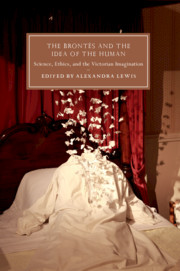Book contents
- The Brontës and the Idea of the Human
- Cambridge Studies in Nineteenth-Century Literature and Culture
- The Brontës and the Idea of the Human
- Copyright page
- Contents
- Figures
- Contributors
- Abbreviations
- Introduction Human Subjects
- Chapter 1 Hanging, Crushing, and Shooting
- Chapter 2 Learning to Imagine
- Chapter 3 Charlotte Brontë and the Science of the Imagination
- Chapter 4 Being Human
- Chapter 5 Charlotte Brontë and the Listening Reader
- Chapter 6 Burning Art and Political Resistance
- Chapter 7 Degraded Nature
- Chapter 8 ‘Angels … Recognize Our Innocence’
- Chapter 9 ‘A Strange Change Approaching’
- Chapter 10 ‘Surely Some Oracle Has Been with Me’
- Chapter 11 Jane Eyre, A Teaching Experiment
- Chapter 12 Fiction as Critique
- Chapter 13 We Are Three Sisters
- Bibliography
- Index
- Cambridge Studies in Nineteenth-Century Literature and Culture
Chapter 10 - ‘Surely Some Oracle Has Been with Me’
Women's Prophecy and Ethical Rebuke in Poems by Charlotte, Emily, and Anne Brontë
Published online by Cambridge University Press: 22 May 2019
- The Brontës and the Idea of the Human
- Cambridge Studies in Nineteenth-Century Literature and Culture
- The Brontës and the Idea of the Human
- Copyright page
- Contents
- Figures
- Contributors
- Abbreviations
- Introduction Human Subjects
- Chapter 1 Hanging, Crushing, and Shooting
- Chapter 2 Learning to Imagine
- Chapter 3 Charlotte Brontë and the Science of the Imagination
- Chapter 4 Being Human
- Chapter 5 Charlotte Brontë and the Listening Reader
- Chapter 6 Burning Art and Political Resistance
- Chapter 7 Degraded Nature
- Chapter 8 ‘Angels … Recognize Our Innocence’
- Chapter 9 ‘A Strange Change Approaching’
- Chapter 10 ‘Surely Some Oracle Has Been with Me’
- Chapter 11 Jane Eyre, A Teaching Experiment
- Chapter 12 Fiction as Critique
- Chapter 13 We Are Three Sisters
- Bibliography
- Index
- Cambridge Studies in Nineteenth-Century Literature and Culture
Summary
Rebecca Styler examines the Brontës’ conversation, through poetry, about the relationship between subjective dreaming and social responsibility. Styler explores the Brontës’ distinct perspectives on the idea of the human as both moral and creative being, and on the purpose of the imagination in light of their conception of the human as standing in relation to a divine reality that exists both within and outside the self. Writing within an inherited female prophetic literary tradition that eschewed escapist visionary flight, the Brontës rework Romantic ideals and the Gothic symbol of the avenging ghost in combination with biblical and dissenting models of the prophet. Styler closely examines a selection of poems in which the spiritual authority of a female outsider is imposed upon the cultural values of a patriarchal establishment, including Charlotte’s ‘Pilate’s Wife’s Dream’ and ‘Gilbert’, Emily’s ‘The Prisoner’ and ‘The night was dark yet winter breathed’, and Anne’s ‘A Word to the Calvinists’. For Styler, while Charlotte’s poetry denounces sinful male privilege and domination (a form of feminist critique), Emily and Anne evoke the female prophetic voice – even, in Emily’s case, to the point of the ecofeminine – to propound a model of fellowship, rather than hierarchy.
- Type
- Chapter
- Information
- The Brontës and the Idea of the HumanScience, Ethics, and the Victorian Imagination, pp. 207 - 225Publisher: Cambridge University PressPrint publication year: 2019

